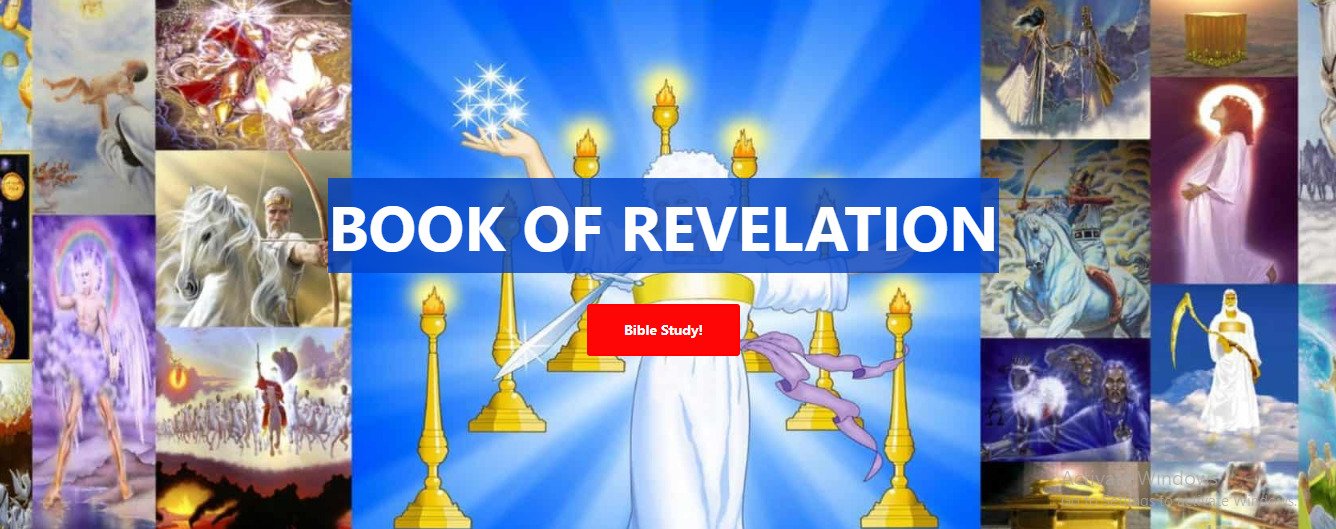
Book of Revelation – Complete Biography & Overview
Introduction
The Book of Revelation, also called the Apocalypse of John, is the last book of the New Testament and the Christian Bible. Among all the books of Scripture, it is one of the most mysterious, symbolic, and debated texts. Revelation is not merely a prophetic writing but also a deeply spiritual book that has inspired faith, fear, and fascination for nearly two thousand years. Written during times of persecution, its message is both a warning and a promise: evil will not triumph forever, and God’s ultimate victory is certain.
This book stands apart in the Bible because of its vivid imagery, symbolic language, and apocalyptic visions that speak about the end times, judgment, and the establishment of God’s eternal kingdom.
Historical Background
The Book of Revelation was most likely written around 95–96 AD, during the reign of Emperor Domitian of Rome. At this time, Christians were facing severe persecution. Believers were being imprisoned, exiled, and even executed for refusing to worship the emperor or participate in Roman religious practices.
The author, traditionally identified as John the Apostle, was exiled on the island of Patmos, a small rocky island in the Aegean Sea. It was there that John received visions from God and recorded them for the encouragement of the Christian churches.
Authorship
The book identifies its writer simply as “John.” Early Christian tradition associates this John with the Apostle John, the beloved disciple of Jesus and the author of the Gospel of John and three epistles. However, some modern scholars suggest that the author may have been another Christian prophet or elder named John.
Regardless of the debate, the author presents himself as a servant of Christ who received divine revelations and was commanded to share them with the seven churches of Asia Minor.
Structure of the Book
The Book of Revelation is organized into a series of visions and symbolic messages:
Introduction & Messages to the Seven Churches (Chapters 1–3)
Jesus appears to John and commands him to write letters to seven churches: Ephesus, Smyrna, Pergamum, Thyatira, Sardis, Philadelphia, and Laodicea.
Each letter contains encouragement, rebuke, and promises for those who remain faithful.
Heavenly Throne Room Vision (Chapters 4–5)
John sees the throne of God, surrounded by angels and elders, and the Lamb (Jesus Christ) who is worthy to open the scroll.
The Seven Seals (Chapters 6–8)
The opening of the seals reveals events of war, famine, death, and cosmic upheaval, often called the “Four Horsemen of the Apocalypse.”
The Seven Trumpets (Chapters 8–11)
Each trumpet blast unleashes judgments upon the earth, including natural disasters and plagues.
The Dragon and the Beasts (Chapters 12–14)
A great spiritual battle is described between the dragon (Satan), the beast from the sea (worldly powers), and the beast from the earth (false prophets).
The Seven Bowls of God’s Wrath (Chapters 15–16)
Intense plagues and judgments are poured upon the world.
The Fall of Babylon (Chapters 17–18)
Symbolic Babylon, representing corrupt worldly systems, is destroyed.
The Return of Christ (Chapter 19)
Jesus returns as the victorious King of Kings and Lord of Lords.
The Final Judgment (Chapter 20)
Satan is defeated, and the dead are judged before God’s throne.
The New Heaven and New Earth (Chapters 21–22)
God creates a new world where there is no pain, death, or suffering. The New Jerusalem descends from heaven, and God dwells with His people forever.
Symbolism and Imagery
The Book of Revelation is filled with symbols rather than literal descriptions. These include:
Numbers:
7 = perfection and completeness
12 = God’s people (12 tribes, 12 apostles)
666 = number of the beast, symbolizing imperfection or rebellion against God
Animals and Beasts:
The dragon represents Satan
The beast from the sea symbolizes oppressive political powers
The beast from the earth symbolizes false religion or deception
Colors and Objects:
White = purity, victory
Red = bloodshed, war
Black = famine, judgment
Scrolls, trumpets, bowls, and seals = stages of God’s judgment
Major Themes
God’s Sovereignty
Despite chaos and evil, God remains in control.
Judgment and Justice
Evil powers and corrupt systems will not last forever. God will bring judgment.
Perseverance of Believers
Christians are encouraged to remain faithful despite persecution.
Victory of Christ
Jesus is portrayed as the conquering Lamb who defeats Satan and evil.
Hope of a New Creation
The promise of eternal life in the New Jerusalem where God dwells with His people.
Interpretations of Revelation
Throughout history, Christians have understood Revelation in different ways:
Preterist View – The events described happened in the 1st century, mainly referring to Roman persecution.
Historicist View – Revelation is a timeline of church history, from the early church to the end of time.
Futurist View – Most of Revelation is about future end-time events, still to come.
Idealist View – Revelation is symbolic and timeless, representing the ongoing battle between good and evil.
Influence on Christianity and Culture
The Book of Revelation has had a massive influence on Christian theology, worship, and imagination. Its imagery of the beast, Armageddon, the Four Horsemen, and the New Jerusalem has inspired countless works of art, literature, and music.
It has also shaped Christian beliefs about the end times, second coming of Christ, and final judgment. Preachers, theologians, and scholars continue to study and debate its meaning.
In popular culture, Revelation’s apocalyptic images appear in novels, movies, and even everyday language (e.g., “apocalypse” and “Armageddon”).
Conclusion
The Book of Revelation is not simply a mysterious end-time prophecy; it is a book of hope, faith, and assurance. While its visions and symbols can be difficult to interpret, its central message is clear: God is sovereign, Christ is victorious, and evil will ultimately be defeated.
For Christians throughout history and today, Revelation provides encouragement to remain faithful in times of trial, reminding them of the eternal promise of a new heaven and new earth where God will reign forever.

